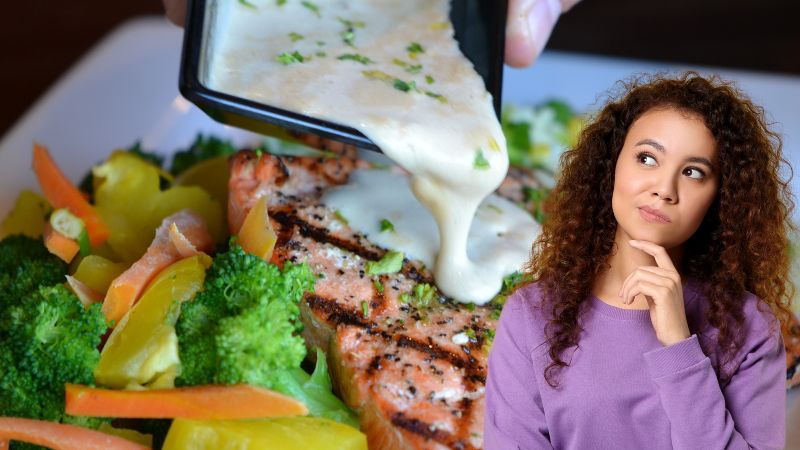The Best Fluffy Pancakes recipe you will fall in love with. Full of tips and tricks to help you make the best pancakes.

Thanks to a neighbor with ties to Alaska, I’m enjoying lots of salmon these days. If you’re like me (new to salmon culture) you probably want to know the ins and outs, like thawing out salmon, and how long does vacuum sealed salmon last in the fridge?
Let’s jump in and discover some differences among salmon types and best practices for handling salmon in the kitchen.
Table of Contents
- Atlantic Salmon vs Pacific Salmon
- Atlantic Salmon vs Sockeye Salmon
- Pink Salmon vs Red Salmon
- Salmon Oil for Health
- How to Cook Salmon Bellies
- How to Thaw Smoked Salmon
- How to Serve Smoked Salmon
- How Much Smoked Salmon Per Person?
- How Long Can Salmon Stay in the Fridge?
- How Long Does Vacuum Sealed Salmon Last?
- Final Thoughts
Atlantic Salmon vs Pacific Salmon
When comparing Atlantic salmon to Pacific salmon, you’re really diving into a tale of two oceans and distinct culinary profiles. 🌍 Atlantic salmon—mostly farm-raised—offers a consistently mild flavor and a smooth, almost creamy texture, making it a go-to for everything from pan-searing to sushi.
Meanwhile, Pacific salmon covers five wild species: sockeye, coho, chinook, pink, and chum, each with their own punchy flavors and firm textures. 🐟 Pacific varieties tend to have deeper color and richer taste due to their wild diets and active lifestyles. If you’re looking for sustainability, wild Pacific salmon often takes the crown, while Atlantic salmon wins on availability and price. In the kitchen, it’s all about preference: smooth and subtle or bold and briny.
Just an FYI, Alaska is home to the Pacific salmon. We enjoy the wild caught Alaskan salmon (and all of the fun pictures that our neighbor sends of his fishing sprees!).
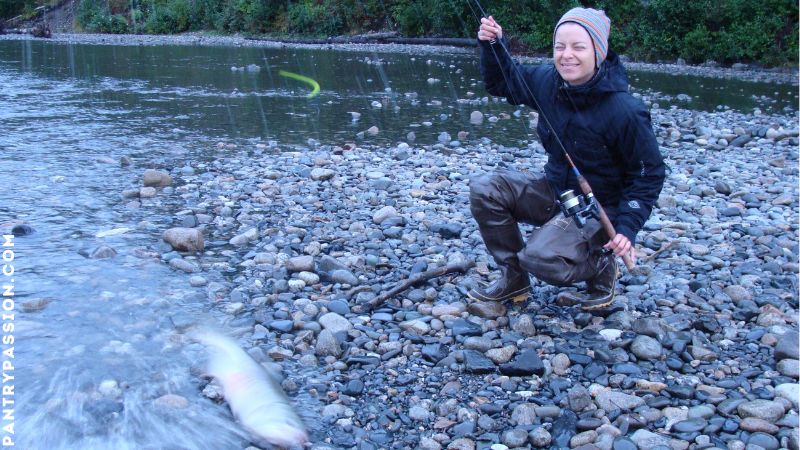
Atlantic Salmon vs Sockeye Salmon
When choosing between Atlantic and sockeye salmon, it’s all about flavor, texture, and origin. 🧂 Atlantic salmon, typically farm-raised, boasts a mild taste and a buttery, tender texture that makes it versatile for a variety of dishes. In contrast, sockeye salmon, caught wild in the Pacific, packs a punch with its bold, rich flavor and firm, deep-red flesh—perfect for grilling or showcasing in vibrant recipes.
🌊 While Atlantic salmon is more widely available and often less expensive, sockeye is prized for its nutritional density and robust taste. The choice depends on what you’re cooking—and how adventurous your palate feels.

Pink Salmon vs Red Salmon
When it comes to pink salmon vs. red salmon, the differences are not just in color—they’re a tale of taste, texture, and where they shine in the kitchen. 🎨 Pink salmon, the most abundant of the Pacific species, has pale flesh and a delicate flavor, making it ideal for light recipes or canned preparations. It’s budget-friendly and perfect for those who prefer a milder fish.
Meanwhile, red salmon—also known as sockeye—boasts a deep, ruby-red hue, firm texture, and bold, full-bodied flavor thanks to its wild diet. 🍽️ Red salmon holds its own in grilling, broiling, or any dish where you want salmon to be the star. Whether you’re planning a casual meal or a culinary showstopper, the choice depends on your taste preferences and how much punch you want your fish to pack.
Salmon Oil for Health
Alaska wild salmon oil is a dietary supplement made from the oil of wild-caught salmon swimming in the pristine waters of Alaska. It’s prized for its natural balance of omega-3 fatty acids, especially EPA and DHA, which support heart, brain, and joint health.
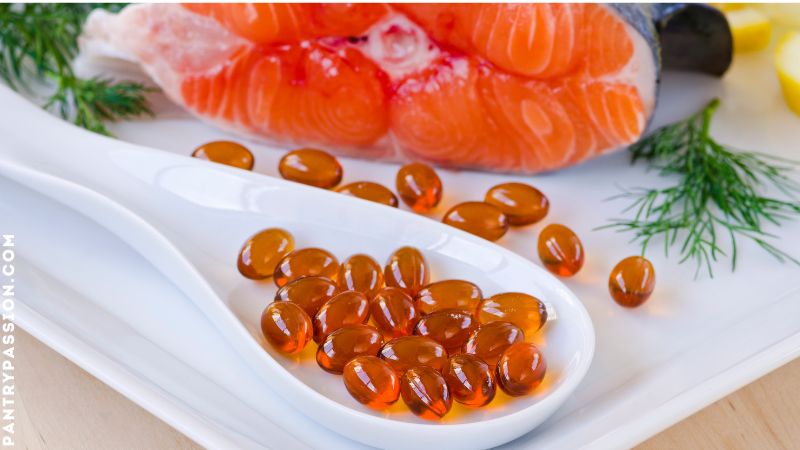
Here’s what makes it stand out:
- Sourced from wild Alaskan salmon, not farmed fish — meaning it’s naturally low in contaminants like mercury
- Extracted using a cold-press, extra virgin process to preserve nutrients without chemical treatments
- Contains omega-3s in their natural triglyceride form, which may be easier for the body to absorb
- Includes vitamins A, D, and E, plus the antioxidant astaxanthin, all naturally found in salmon
- Often USP Verified, meaning it meets strict standards for purity and potency
It’s like getting the benefits of eating salmon—without needing a grill or lemon wedge.
How to Cook Salmon Bellies
Salmon bellies might just be one of the most underrated treasures in the seafood world—rich, silky, and full of healthy fats that practically melt in your mouth when cooked right. I had no idea until I actually tasted a smoked salmon belly – yum!
🔥 To bring out their buttery magic, try pan-searing them over medium-high heat with just a touch of oil and seasoning—think salt, pepper, garlic, and a squeeze of lemon. The crisped edges and tender inside deliver an irresistible contrast.
🍋 For a deeper flavor, marinate them in soy sauce, ginger, and sesame oil, then grill or roast for an Asian-inspired twist. Because of their fat content, salmon bellies are ideal for high-heat cooking methods and work beautifully in rice bowls, tacos, or even crisped up and added to salads. Just don’t overcook—they’re at their best when just barely done.
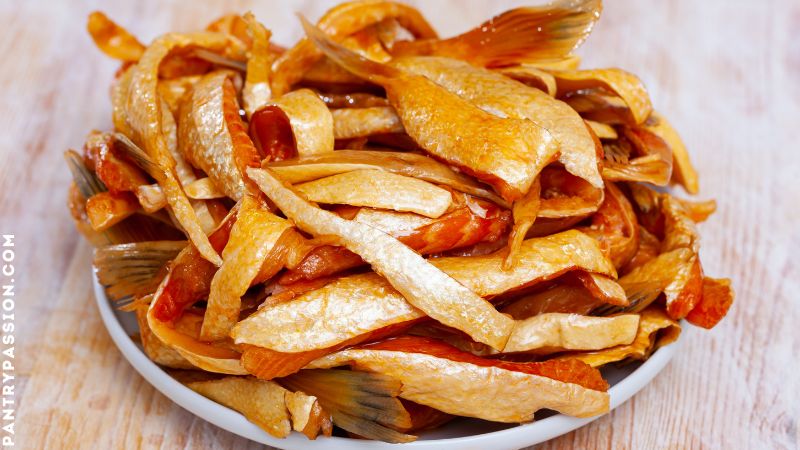
How to Thaw Smoked Salmon
Thawing smoked salmon the right way preserves its silky texture and deep flavor—so skip the microwave and go low and slow. ❄️ The best method is to transfer it from the freezer to the fridge and let it thaw overnight. This gentle process keeps the fish’s natural oils intact and prevents it from becoming mushy.
If you’re short on time, you can submerge the sealed package in cold water for 30 minutes to an hour, making sure it stays cold the whole time. Never thaw smoked salmon on the kitchen counter—room temperature invites bacteria and spoils the delicate taste. Once thawed, eat it within a couple of days and keep it refrigerated. That smoky richness deserves proper care!
How to Serve Smoked Salmon
🥂 Elegant & Easy Ways to Serve Smoked Salmon
Smoked salmon is incredibly versatile—whether you’re hosting brunch, prepping appetizers, or crafting a gourmet dinner, it adds a luxurious touch with minimal effort. Here are some delicious serving ideas to inspire your next spread:

🍞 Classic Pairings
- Bagel & Cream Cheese: Top toasted bagels with cream cheese, smoked salmon, red onion, capers, and fresh dill.
- Crostini or Crackers: Spread cream cheese or crème fraîche on crostini, then layer with smoked salmon and garnish with lemon zest or chives.
- Tea Sandwiches: Make dainty sandwiches with soft bread, cream cheese, cucumber slices, and smoked salmon.
🧆 Appetizers & Platters
- Smoked Salmon Platter: Arrange salmon with accompaniments like hard-boiled eggs, cucumbers, tomatoes, red onions, capers, dill, and mini bagels or toast points. Perfect for brunch or parties.
- Roll-Ups: Spread cream cheese on salmon slices, add capers and cucumber spears, then roll and slice into pinwheels.
- Deviled Eggs: Mix chopped smoked salmon into the yolk filling for a savory twist.
🍳 Breakfast & Brunch
- Omelets or Scrambles: Fold smoked salmon into eggs with chives or green onions.
- Avocado Toast: Top toast with mashed avocado, smoked salmon, and a sprinkle of chili flakes or lemon juice.
- Eggs Benedict: Replace Canadian bacon with smoked salmon for a luxe version.
🥗 Lunch & Dinner Ideas
- Salads: Toss smoked salmon into green salads, pasta salads, or lentil bowls with lemon vinaigrette.
- Pasta: Combine with creamy Alfredo sauce, fresh herbs, and cherry tomatoes.
- Risotto: Stir into lemony risotto with mascarpone and arugula.
- Tacos or Wraps: Use smoked salmon as the protein in wraps with dill, cucumber, and lemon zest.
🍸 Fancy Touches
- Martini Glass Presentation: Layer smoked salmon with avocado and mozzarella in chilled glasses, topped with balsamic glaze.
- Sushi Rolls: Use smoked salmon instead of raw fish in homemade sushi with cucumber and avocado.
How Much Smoked Salmon Per Person?
The amount of smoked salmon you’ll need depends on how you’re serving it. Here’s a quick breakdown to help you portion it just right:
🍽️ General Guidelines
| Serving Style | Amount per Person |
|---|---|
| Appetizer or starter | 2–3 oz (56–85 g) |
| Salad topping or crackers | 1–2 oz (28–56 g) |
| Main course or entrée | 4–6 oz (113–170 g) |
| Brunch buffet | 2–3 oz (56–85 g) |
| Charcuterie board | 1–2 oz (28–56 g) |
🧠 Things to Consider
- Appetites: Bigger eaters may want more, especially if it’s the main protein.
- Other dishes: If it’s part of a spread, you can go lighter.
- Occasion: A fancy dinner? Go generous. A casual brunch? Keep it light.
- Leftovers: Smoked salmon lasts 3–4 days in the fridge, so a little extra is okay.
How Long Can Salmon Stay in the Fridge?
🐟 Salmon Shelf Life in the Fridge
Here’s how long salmon can safely stay fresh in your refrigerator, depending on its form:
🧊 Raw Salmon
- 1 to 2 days in the fridge
- Store in an airtight container or tightly wrapped in plastic/aluminum foil
- Keep in the coldest part of the fridge (ideally 32°F to 38°F)
🍽️ Cooked Salmon
- 3 to 4 days in the fridge
- Let it cool to room temperature before storing
- Use airtight containers to prevent spoilage
❄️ Thawed Salmon
- 1 to 2 days after thawing in the fridge
- If thawed using cold water or microwave, cook immediately
🔥 Smoked Salmon
- Unopened: up to 2 weeks to 1 month, depending on packaging
- Opened: consume within 3 to 4 days
🧼 Signs It’s Gone Bad
- Slimy texture
- Strong fishy or sour smell
- Discoloration (gray, green, or dull flesh)
- Mold or fuzzy spots
If you’re unsure, it’s safest to toss it.
How Long Does Vacuum Sealed Salmon Last?
Like all vacuum sealed meat, you take your chances. It really starts out with a good seal. There is nothing more annoying than digging through the chest freezer and eyeing the tell-tale seal of a failed vacuum seal.
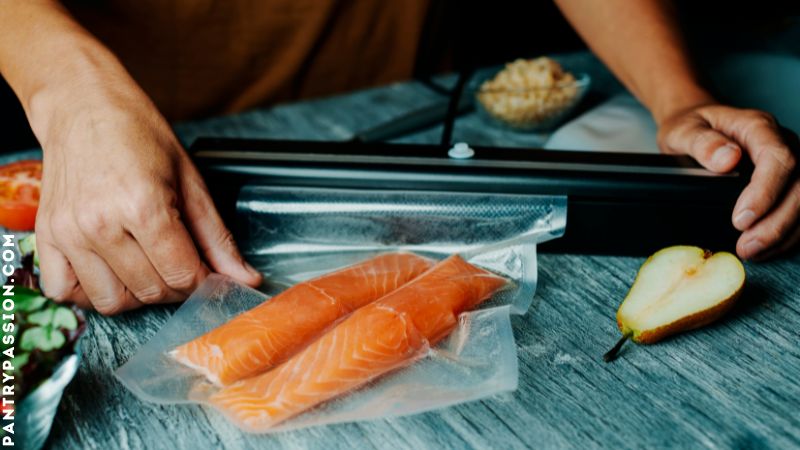
🐟 Vacuum-sealed salmon can last 3 to 7 days in the fridge when stored properly at or below 40°F (4°C). The exact shelf life depends on:
- Freshness at sealing: The fresher the salmon when vacuum-sealed, the longer it will last.
- Seal integrity: A tight, undamaged seal helps prevent spoilage.
- Fridge temperature: Consistent cold slows bacterial growth.
🔍 Signs it’s gone bad include:
- Sour or fishy odor
- Slimy texture
- Discoloration (gray or greenish tints)
🧊 If you’re not planning to eat it soon, freezing is a great option—vacuum-sealed salmon can last 6 to 12 months in the freezer.
Final Thoughts
Whether you are exploring health benefits, or someone gifted you salmon, it’s a wonderful meal addition. I hope these ideas will get you excited about partaking in this delicious food!


